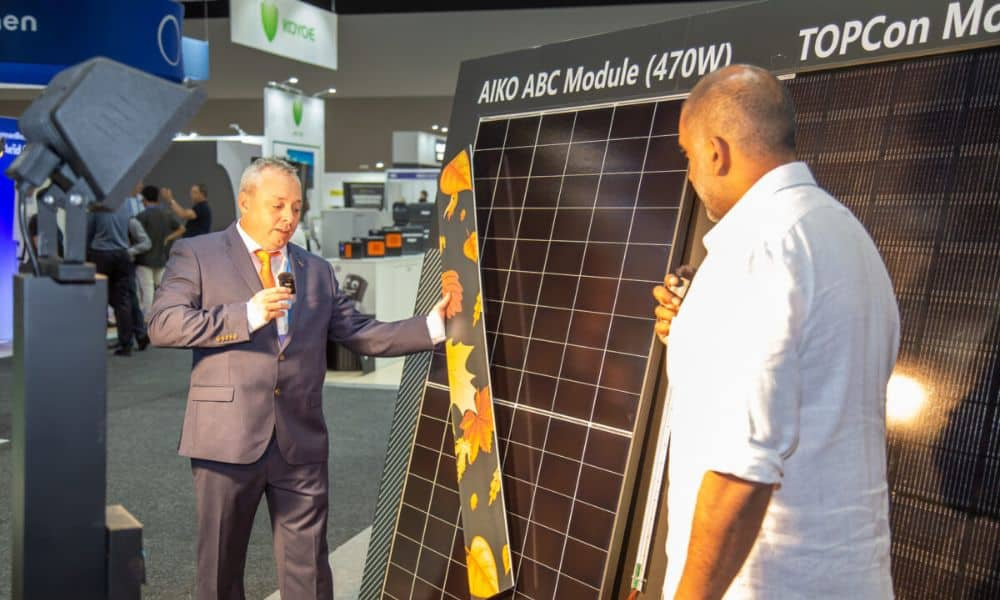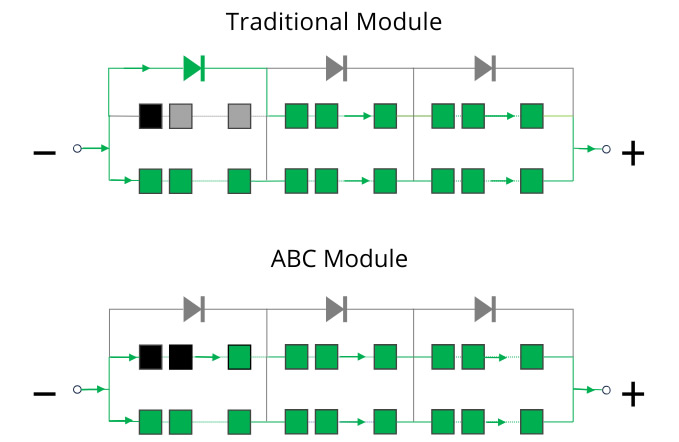From Mystery to Mastery: Understanding AIKO’s Partial Shading Optimization in ABC Solar Modules
July 7th, 2024
AIKO has recently introduced a groundbreaking shade management technology in Australia, sparking a lot of interest and curiosity. Many people have heard about it but don’t fully understand how it works. It might seem almost like black magic, but let’s delve into the fascinating technology behind AIKO’s ABC shade management and see how it actually works.

The Science Behind AIKO ABC Partial Shading Optimization
The key to AIKO’s shade management technology lies in the semiconductor physics of the solar cells. When a solar cell is shaded, it can enter a state known as semiconductor breakdown. This isn’t as catastrophic as it sounds; in fact, it’s a non-destructive process where the cell continues to pass current. The concept of soft breakdown in semiconductors has been around for a while and has been thoroughly studied, with numerous research papers, such as those by Calcabrini et al. (2022) and Chu et al. (2015), available in the public domain.
Understanding the Mechanism
A closer look at the structure of these solar cells reveals that the distance within the silicon between the p-type and n-type regions is shorter. This configuration requires a lower reverse bias voltage to enter the breakdown state. In 2024, this level of precision is only achievable with back contact cells featuring meticulously engineered interdigitated contacts. Traditional TOPCon front metal cells can’t achieve this level of performance.
In simple terms, when a cell is shaded, it can pass current around itself. This allows the majority of the cells in the panel sub-string to continue contributing voltage and energy, significantly improving overall panel efficiency even in partially shaded conditions.
Comparison between Traditional Bypass Technology and AIKO’s Advanced Shade Management

- ▪️ Traditional Bypass Technology: In traditional TOPCon modules, bypass diodes are used to mitigate the effects of shading. When shading creates a hot spot, the bypass diodes deactivate one-third of the panel, allowing the current to bypass the affected area. This means that shading a single cell activates the bypass diode, resulting in a power loss of one-third of the module’s maximum power. While this mechanism protects the panel and its cells from damage, it significantly reduces the panel’s efficiency and output.
- ▪️ AIKO’s Partial Shading Optimization: AIKO ABC modules with Partial Shading Optimization operate differently. Unlike traditional panels, AIKO panels can bypass individual shaded solar cells without affecting the entire string, ensuring continuous energy production from the rest of the panel. Shading one cell results in only single digit percentage power loss, with the bypass diode activating only when four cells are shaded, thus maintaining higher overall efficiency.
This superior performance is achieved through advanced semiconductor physics. When a cell is shaded, it enters a non-destructive state called semiconductor breakdown, allowing it to pass current around itself and preventing the erratic current behaviour that causes hot spots in traditional cells. Additionally, AIKO’s back contact cells feature meticulously engineered interdigitated contacts, which require lower voltage to function efficiently in shaded conditions. This advanced design significantly enhances overall panel performance and efficiency, even when some cells are shaded.
AIKO’s partial shading optimization is not black magic—it’s advanced physics and innovative engineering working together. By intelligently managing shading at the cell level, AIKO panels offer superior performance and long-term efficiency, making them a smart choice for installations where shading is inevitable.
Next time someone asks about the secret behind AIKO’s shading optimization, confidently explain that it’s all about precise engineering and the sophisticated use of semiconductor physics. And no, it’s not magic—it’s just really, really smart science.
For more technical issues, please contact us marketing@aikosolar.com